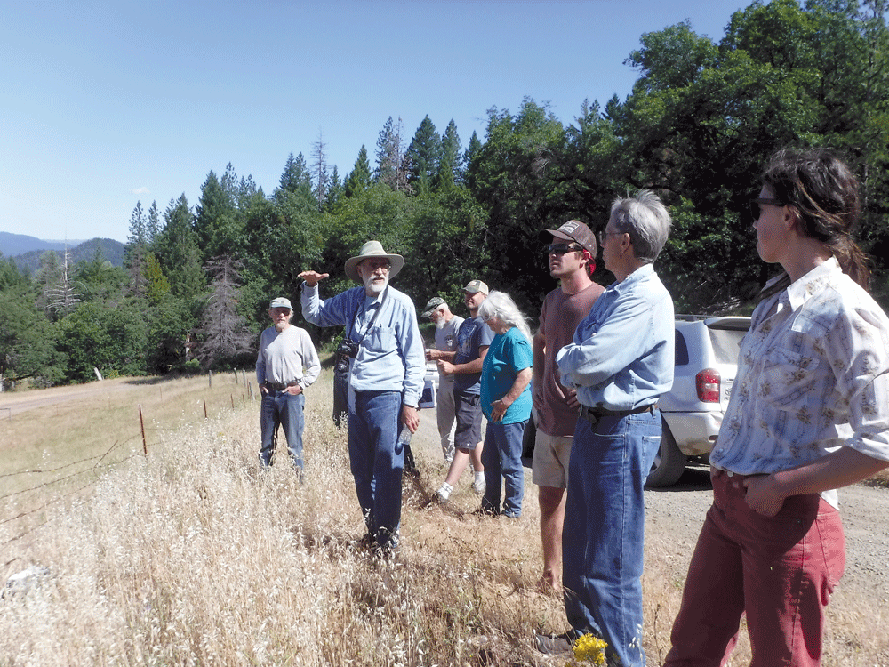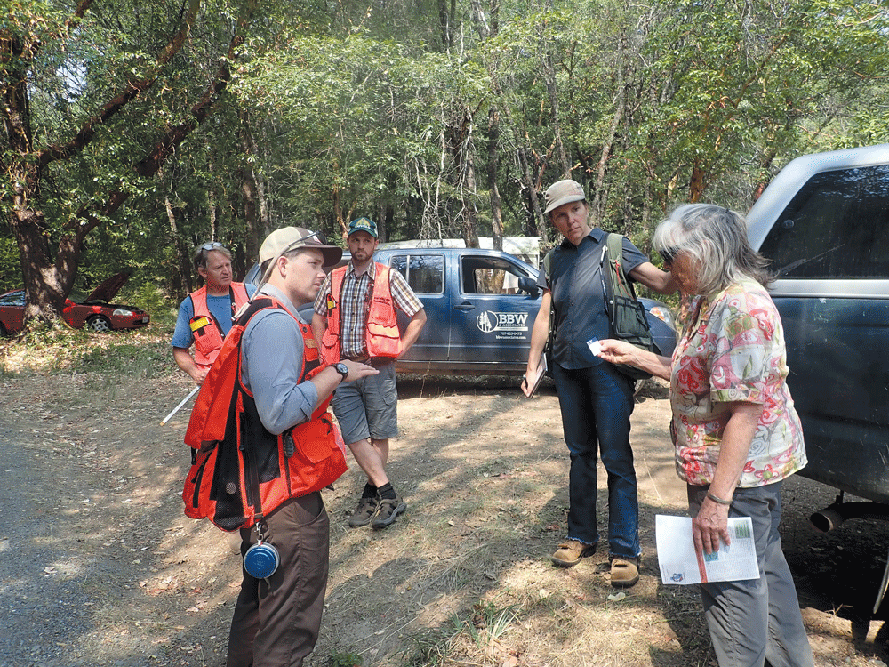Time to Forge a New Relationship with Fire in the Eel River Watershed

The rapid onset of climate change is partly responsible for the one million acre plus August Complex Fire that has burned vast areas of the east side of the Eel River watershed in 2020, but there are also legacy problems adding to increased fuel loads and the severity of the fire. While there has been a lot of damage to public and private lands, thank goodness no lives were lost. It is important to remember that some benefits will result from the fire. What is clear is that our relationship with fire must change.
The August Complex stretches from the headwaters of the Black Butte River in the south, through the Yolla Bolla Wilderness in the upper Middle Fork Eel, across the North Fork and into the headwaters of the Van Duzen in the Lassics Wilderness. This whole expanse is the “snow zone” of the Eel River watershed and, unfortunately, there has only rarely been a robust snowpack over the last two decades. Add to that prolonged record droughts, such as 2013-2015, and you have a set up for a hot fire and potential major changes to the forests of the snow zone.
Both the upper Black Butte and Middle Fork watersheds have vast swaths of mixed conifer forests that have co-evolved with snow, and they are stressed and may have burned hot. Logging on high elevation public and private land has led to elevated fire risk and this may have also exacerbated fire intensity locally in these sub-basins. Since the snow is not likely to return soon, it raises the question of what succession will be naturally and what trees species we should select for restoration of higher elevation burned areas.
The North Fork Eel River watershed was set up to burn hot because of the build-up of fuels over the 160 years, since the cessation on Indian burning. Archaeologist Thomas Keter and the brothers John and Tracy Elgin of Wylaki and Wintu descent documented the problem of dead and dying oaks being over-topped by Douglas-fir trees and warned of the extraordinary fire risk. The good news here is that the August Fire may be the mechanism for white oak to once again rise to dominance. Recent University of California Berkeley studies of white oak showed them to be able to subsist with very little summer moisture because of an adaptation that allows internal recirculation of water. They predicted that white oak would re-expand in range with climate change. While most of us envisioned this happening over centuries, the August Fire shows change is happening rapidly.

If the August Fire leads to succession back towards white oak in the North Fork watershed, this will help improve stream base flows. Keter also documented that Douglas-firs were encroaching on meadows and springs, which had a depressing effect on the forage base for grazing animals and stream flow. If firs were cleared from these areas by the fire, it should improve wildlife habitat and North Fork flows. Another silver lining of fire is that it may contribute large wood to streams that improves fish habitat complexity, as ground fires girdle trees at the base and they fall in.
Glen Martin in his excellent article “Keepers of the Oaks” in Discover Magazine, 1996, noted that California Indians maintained grasslands and oak woodlands with fire, harvesting their seeds and acorns for food, as well as game that thrived on new vegetation after fires. Martin summarized the aggregate effect of this regime, “Applied regularly over a vast area for centuries, fire became a force as profound as the weather in its impact on regional ecology”. He quotes UCLA Ethnobotanist Kat Anderson regarding the present condition of California wildlands: “It’s like a feral garden, one that has gone to weeds through neglect.” Tribal elder Ernie Merrifield, who is of Wylaki descent, asserts that “We must resume stewardship of the land or the Creator will take back the gifts of food and medicine provided to us since time immemorial.”

As we move forward in re-shaping the land to reduce fire risk and improve ecological productivity, we will have to practice adaptive management because, as the climate changes, so do the plants suited to different locales. An example of this, as recently reported in The New York Times, are arborists who tend trees for cities and towns in New England. They are giving up on maintaining ash trees there because of a shift in climate, and planting Mid-Atlantic species in hope of maintaining species diversity. Grasslands in the Eel River basin are being overrun by star thistle, and fire can be used to restore native grass species, but only if we commit to management on a regular basis. Similarly, we must control brush and forest undergrowth routinely, or we will face the same problem with extreme fire risk 30-40 years from now.
Landowners throughout the Eel River watershed need to get forest health plans and then we need to acquire resources for implementation at a watershed scale. Forest health must also be improved on United States Forest Service lands, and Native Americans need to be involved to assist with restoration of their ancestral territories. We need to involve youth, and create career tracks in forest health through articulated programs between high schools, community colleges, and universities so they can become scientists and/or forest health practitioners. Funding will be available and this is the time to plug communities and the youth into stewardship of the land. Benefits will be: less catastrophic fire risk, improved biodiversity, economic opportunity, improved watershed hydrology that allows restoration of flow, and carbon sequestration to help buffer global warming.
For more information:
www.eelriverrecovery.org
